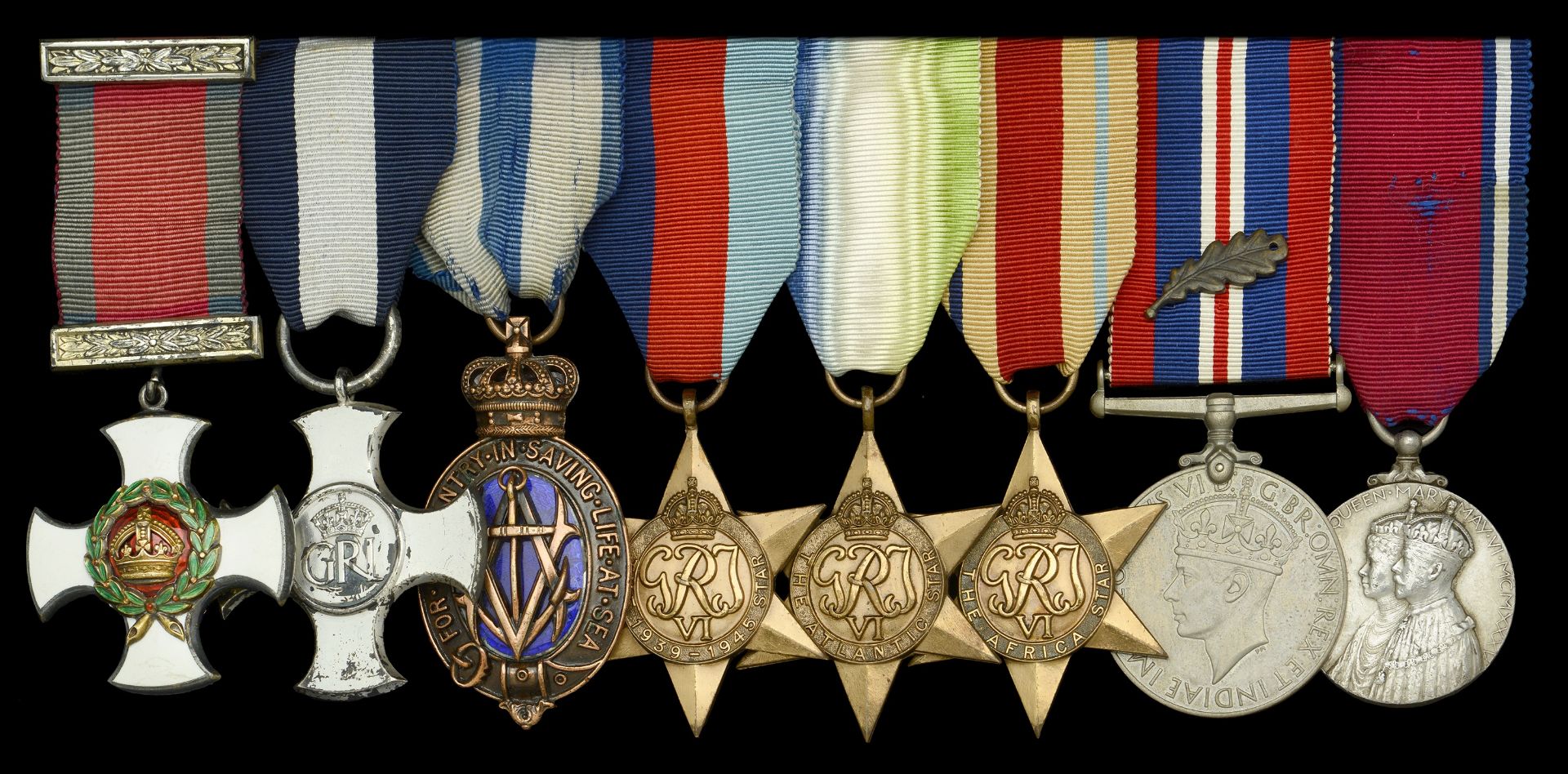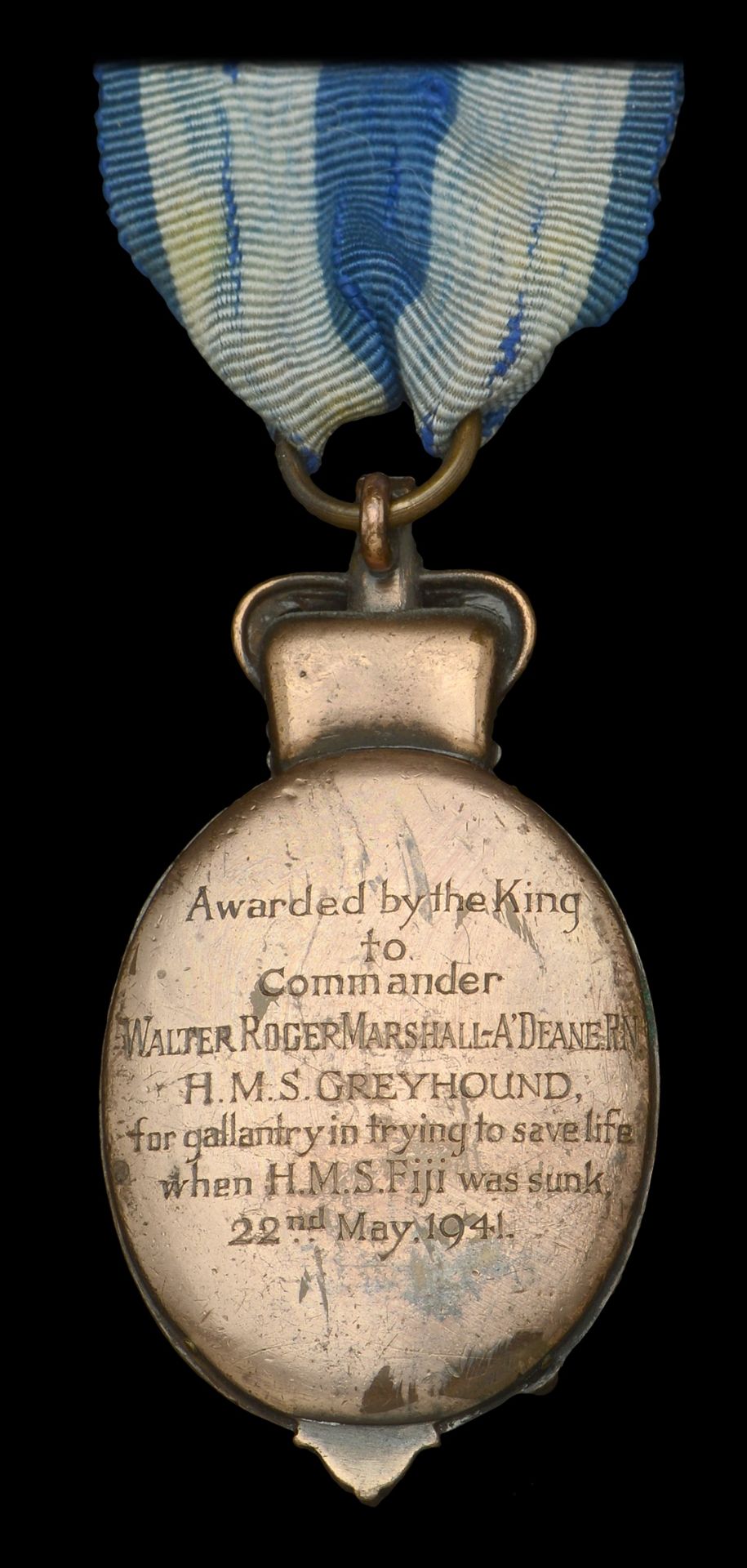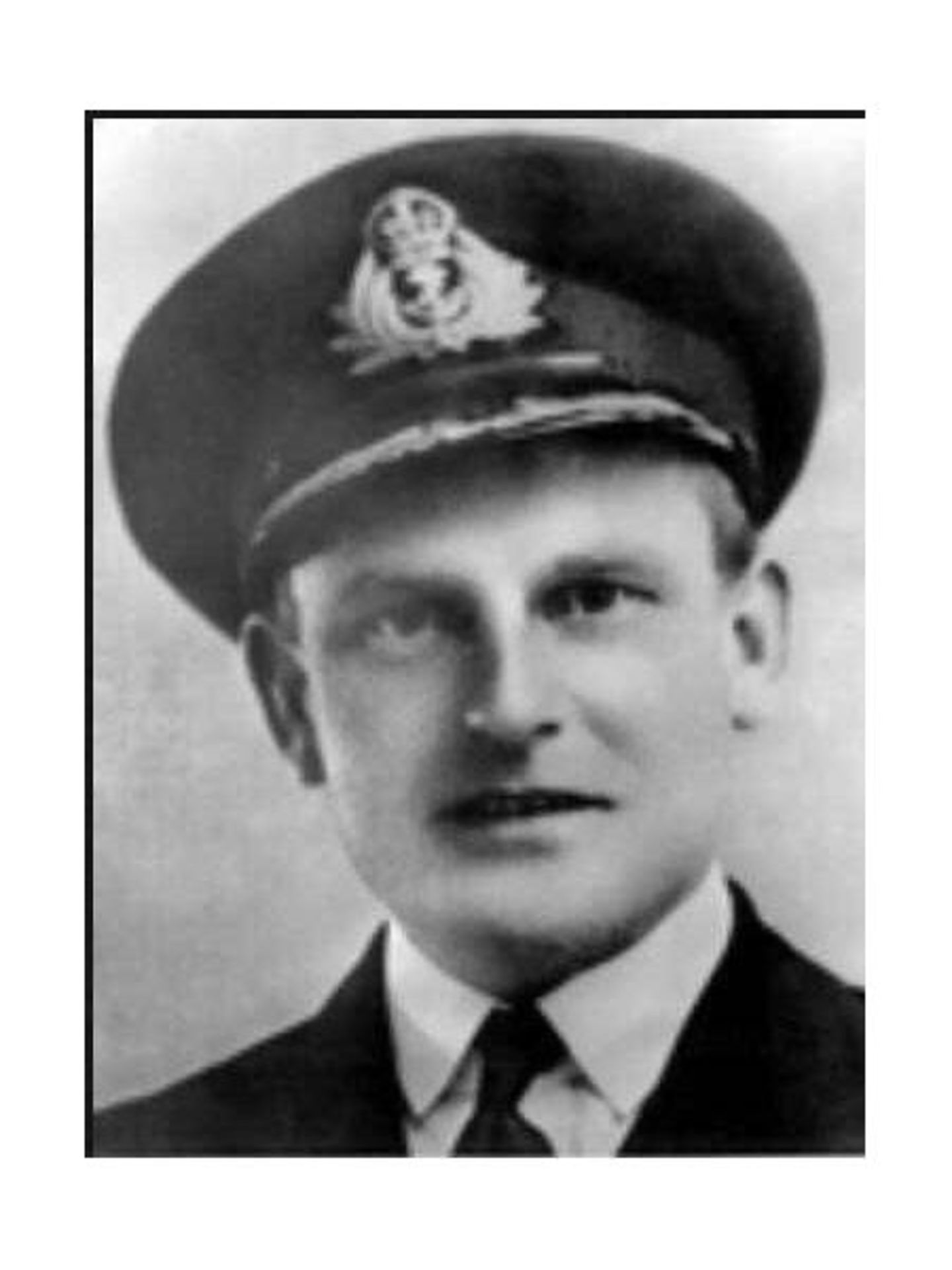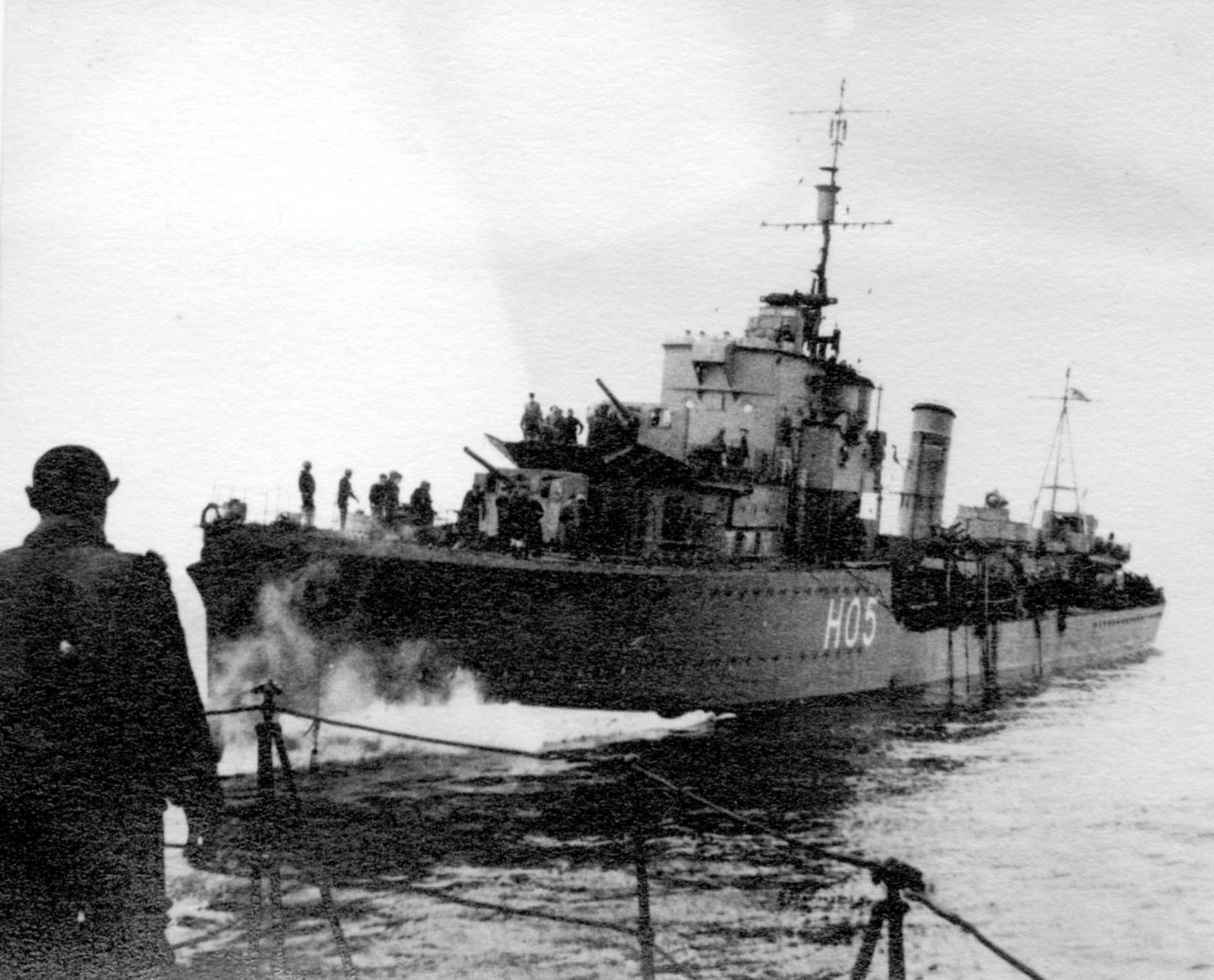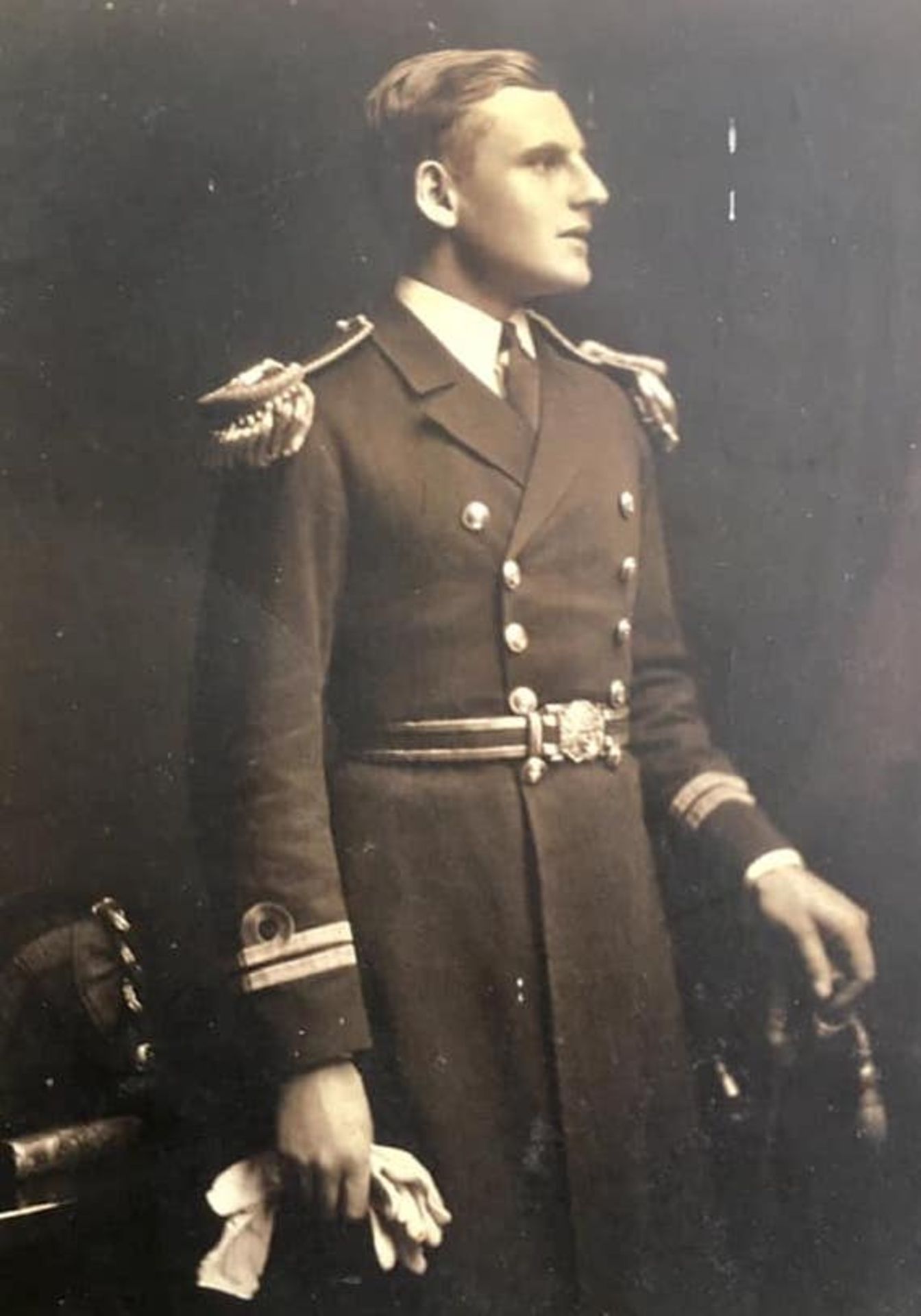The highly emotive and unique Second War D.S.O., D.S.C., and Posthumous Albert Medal group of eight awarded to Commander W. R. Marshall-A’Deane, Royal Navy, whose distinguished command of the destroyer H.M.S. Greyhound came to a sudden end when she was bombed and sunk by German aircraft during the battle of Crete in May 1941 when he was amongst the survivors picked up by H.M.S. Kandahar; later in the day H.M.S. Fiji was sunk and Kandahar again went to the rescue. ‘Commander Marshall-A’Deane, despite the ordeal he had already been through that day, dived overboard in the gathering darkness to rescue the men in the water. He was not seen again. This was the last proof of his great gallantry.’ Distinguished Service Order, G.VI.R., silver-gilt and enamel, reverse of lower suspension officially dated 1941, with integral top ribbon bar; Distinguished Service Cross, G.VI.R., reverse officially dated 1940 and hallmarked London 1940; Albert Medal, 2nd Class, for Gallantry in Saving Life at Sea, the reverse officially inscribed ‘Awarded by the King to Commander Walter Roger Marshall-A’Deane, R.N. H.M.S. Greyhound for gallantry in trying to save life when H.M.S. Fiji was sunk, 22nd May, 1941.’; 1939-45 Star; Atlantic Star; Africa Star; War Medal 1939-45; Jubilee 1935, these last five unnamed as issued, the first with enamel flake to one reverse arm, all with old lacquer and with some underlying discolouration, otherwise good very fine (8) £20,000-£30,000 --- D.S.C. London Gazette 11 July 1940: ‘For good services in the Royal Navy since the outbreak of War:- Commander, Royal Navy, H.M.S. Greyhound.’ D.S.O. London Gazette 8 July 1941: ‘For courage and skill in a successful attack on an Italian Submarine [Anfitrite]:- Commander, D.S.C., Royal Navy, H.M.S. Greyhound.’ An additional announcement in the London Gazette of 16 February 1943, stated ‘Appointment to date 21st May, 1941.’ Albert Medal (Posthumous) London Gazette 4 November 1941: ‘Commander Walter Roger Marshall-A’Deane, D.S.O., D.S.C., Royal Navy. When his ship, H.M.S. Greyhound, was bombed and sunk, Commander Marshall-A’Deane was among survivors picked up by H.M.S. Kandahar. Later in the day H.M.S. Fiji was sunk and H.M.S. Kandahar again went to the rescue. Commander Marshall-A’Deane, despite the ordeal he had already been through that day, dived overboard in the gathering darkness to rescue the men in the water. He was not seen again. This was the last proof of his great gallantry. Commander Marshall-A’Deane had already in this war been appointed Companion of the Distinguished Service Order, won the Distinguished Service Cross, and twice been mentioned in despatches.’ M.I.D. London Gazette 16 August 1940: ‘Commander, Royal Navy, H.M.S. Greyhound’ (Dunkirk). M.I.D. London Gazette 29 July 1941: ‘Commander, D.S.O., D.S.C., Royal Navy, H.M.S. Greyhound’ (Battle of Cape Matapan). Walter Roger Marshall-A’Deane was born at Keswick, Cumberland on 14 May 1902. He was the younger son of Mr Richard Marshall, originally of Enholmes, Panington, East Yorkshire, and Mrs Gertrude Ellen Marshall, originally of Geraldine, New Zealand. He entered the service of the Royal Navy under his original surname of Marshall during the First World War and entered Osborne Royal Naval College on 15 January 1916; Midshipman, September 1919; Acting Sub-Lieutenant, 15 January 1922; Sub-Lieutenant, 15 September 1922; Lieutenant, 15 August 1924; Lieutenant-Commander, 15 August 1932; Commander, 30 June 1939. Following his marriage in 1926 in New Zealand to Miss Margaret Hamilton A'Deane, the then Lieutenant Roger Marshall added the maiden name of his bride to his own family name and henceforth was known by the family name Marshall-A'Deane. The couple had met in New Zealand when Lieutenant Marshall and Lieutenant Laurence Tollemache, who were both officers from H.M.S. Dunedin, and attachés to Lord Jellicoe, Commander in Chief of the Royal Navy. With Jellicoe, these two officers were regular visitors to the A'Deane family home of Ashcott, Takapau, Hawke's Bay on New Zealand's North Island. On the same day that Lieutenant Marshall married Margaret A'Deane, Lieutenant Tollemache married Margaret's sister, Violet, in a double marriage ceremony. Lieutenant Tollemache also went on to become a Commander in the Royal Navy and served in WW2, where he had the misfortune to be taken prisoner by the Japanese at Singapore in 1942. On 5 July 1939, shortly before the outbreak of war, Marshall-A'Deane was appointed commanding officer of the G Class destroyer H.M.S. Greyhound (Pennant No H05) which was transferred to the Western Approaches Command at Plymouth in October. On 12 November 1939, she collided with her sister ship, Gipsy en-route to Harwich, and her new assignment with the 22nd Destroyer Flotilla, but she was only slightly damaged, and her repairs were completed two days later. The ship rescued survivors on 18 November from the ocean liner S.S. Simon Bolivar, which had struck a mine, and from S.S. Torchbearer the following day. Greyhound began escorting coastal convoys on 5 December when she was transferred back to the 1st Destroyer Flotilla. On 14 January she captured the German blockade runner Phaedra in the North Sea. The ship was refitted between 16 February and 18 March, 1940, and later reassigned to the Home Fleet. On 5 April Greyhound escorted the battle cruiser Renown as she covered the minelayers preparing to implement Operation Wilfred, an operation to lay mines in the Vestfjord to prevent the transport of Swedish iron ore from Narvik to Germany. The ship was present during, but played no part in, Renown's brief engagement with the German battleships Scharnhorst and Gneisenau on 9 April. Greyhound remained in the Vestfjord when the five ships of the 2nd Destroyer Flotilla sailed into the Ofotfjord on 10 April to engage the German ships that had transported the invasion force to Narvik. She covered the withdrawal of the three surviving destroyers later that day. Greyhound was damaged by German bombers at Scapa Flow on 18 April and was repaired at Gravesend, Kent, between 22 April and 19 May. During the Siege of Calais, Greyhound and her sister ship Grafton provided naval gunfire support for the 30th Motor Brigade on 25 and 26 May. On 28 and 29 May she evacuated 1,360 men from Dunkirk before she was damaged by German bombers. She was towed out of the harbour by the Polish destroyer O.R.P. BÅ‚yskawica and taken to the relative safety of Dover with her compliment of rescued soldiers. After her repairs were completed at Chatham Dockyard on 17 June, Greyhound rejoined her flotilla at Dover. On 30 July the ship, and her sister ship Gallant, escorted the aircraft carrier Argus to Gibraltar and Greyhound was assigned to the 13th Destroyer Flotilla based there. The ship participated in Operations Hats at the end of August when the British reinforced the Mediterranean Fleet. During the battle of Dakar on 23 September, Greyhound, together with the destroyer Fury, and the Australian heavy cruiser H.M.A.S. Australia engaged the Vichy French destroyer L'Audacieux which was set on fire and forced to beach itself. The ship escorted the battleship Barham and the cruisers Berwick and Glasgow during Operation Coat in early November as they joined the Mediterranean Fleet. Greyhound herself was transferred to the 14th Destroyer Flotilla in Alexandria, where she participated in the inconclusive Battle of Cape Spartivento on 27 November during Operation Collar. Greyhound participated in Operation Excess in January 1941 and then sank the Italian submarine Neghelli on 19 January while escorting a convoy to Piraeus...












